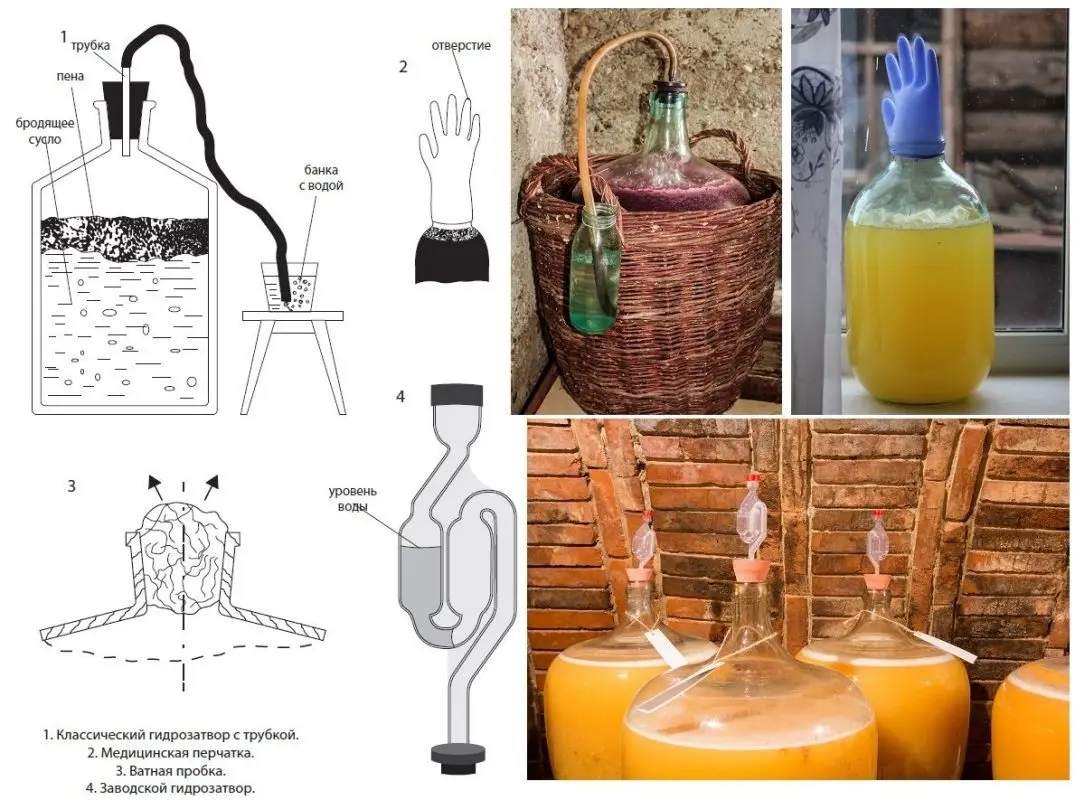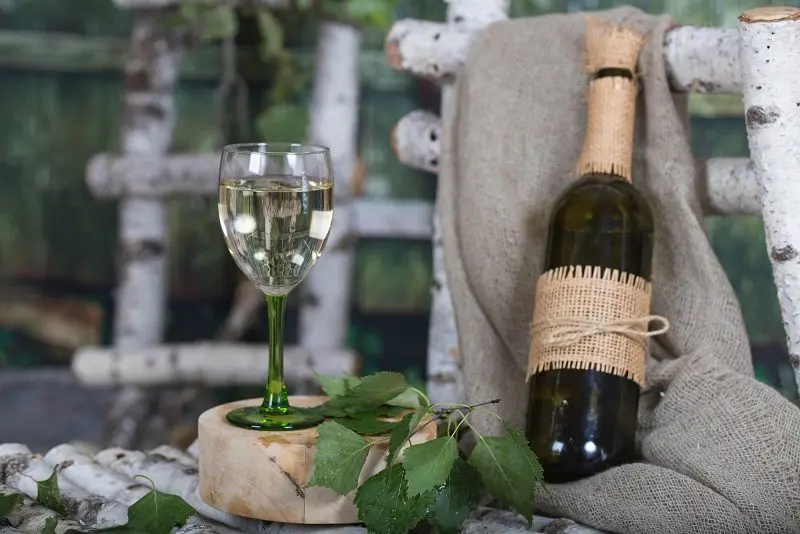Even 100 years ago, birch wine was harvested in barrels in Belarusian villages, using honey instead of sugar. The drink turned out to be low-alcohol and slightly carbonated. But then the recipe was forgotten. Recently, winemakers have revived this ancient tradition, adapting the technology as much as possible to modern possibilities. The result is homemade wine with an original memorable taste.
All containers used should be sterilized with boiling water, then wiped dry with a clean cloth, otherwise infection with pathogenic microorganisms is possible.
Ingredients:
- birch sap – 25 liters;
- sugar – 5 kg;
- citric acid – 8-10 grams;
- raisins – 200 grams (can be replaced with wine yeast);
- liquid honey – 200 grams (optional).
Only non-sour birch sap is suitable for making wine, otherwise it will curdle during the cooking process. The addition of sugar increases the strength and sweetness, without it the wine will turn out to be very weak and tasteless. Citric acid will balance the acidity, which will positively affect the taste and shelf life.
Raisins are needed for sourdough – the activation of wild yeast located on the surface of the grapes. I advise you to buy large dark raisins with a white bloom (this is wild wine yeast), these berries ferment better than other varieties. Honey eliminates slight bitterness. If the honey is crystallized, it must be melted in a water bath before being added to the wort.
Recipe for birch wine
1. 3-4 days before working with juice, make a starter for wine from raisins (owners of wine yeast skip this step).
2. Mix juice, sugar and citric acid in a large enamel saucepan. Bring the mixture to a boil, then simmer, skimming off any foam from the surface, until about 20 liters of must remain in the pot.
Explanation. It is necessary to evaporate a third of the water from birch sap, increasing the concentration of solids, which will positively affect the taste of the finished wine. Be sure to consider the amount of added sugar. 1 liter is equal to 1000 cm3, the density of dry sugar is 1.6 g/cm3, therefore, 1 kg takes up 0,625 liters in a saucepan (1/1.6 = 0.625).
3. Cool the wort to 25°C, stirring occasionally so that no crust appears on the surface (remove if there is).
4. Add starter (dilute wine yeast), liquid honey (optional), mix well. Pour the wort into the fermentation tank, fill up to a maximum of 75% of the volume.
5. Install a water seal on the neck or a medical glove with a small hole in one of the fingers (pierce with a needle). Seal the connection, then transfer the fermentation tank to a dark room with a temperature of 18-25°C.

6. After 3-5 weeks, active fermentation will be completed (the glove will deflate, the water seal will stop bubbling, sediment will form at the bottom, and the wine will become lighter). It’s time to drain the wine from the sediment through a straw into another clean container.
To taste. If desired, add more sugar or fix with alcohol (vodka) – 2-15% of the volume.
7. Fill the storage containers with wine up to the neck (preferably to minimize contact with oxygen), then tightly close with a cork and leave for 14-20 days in a dark, cool place (5-16°C) for aging.
8. Remove the finished birch sap wine from the sediment again and bottle it for storage (optional). Shelf life if stored in the refrigerator or basement up to a year, but it is better to drink immediately. Fortress – 10-12%.










